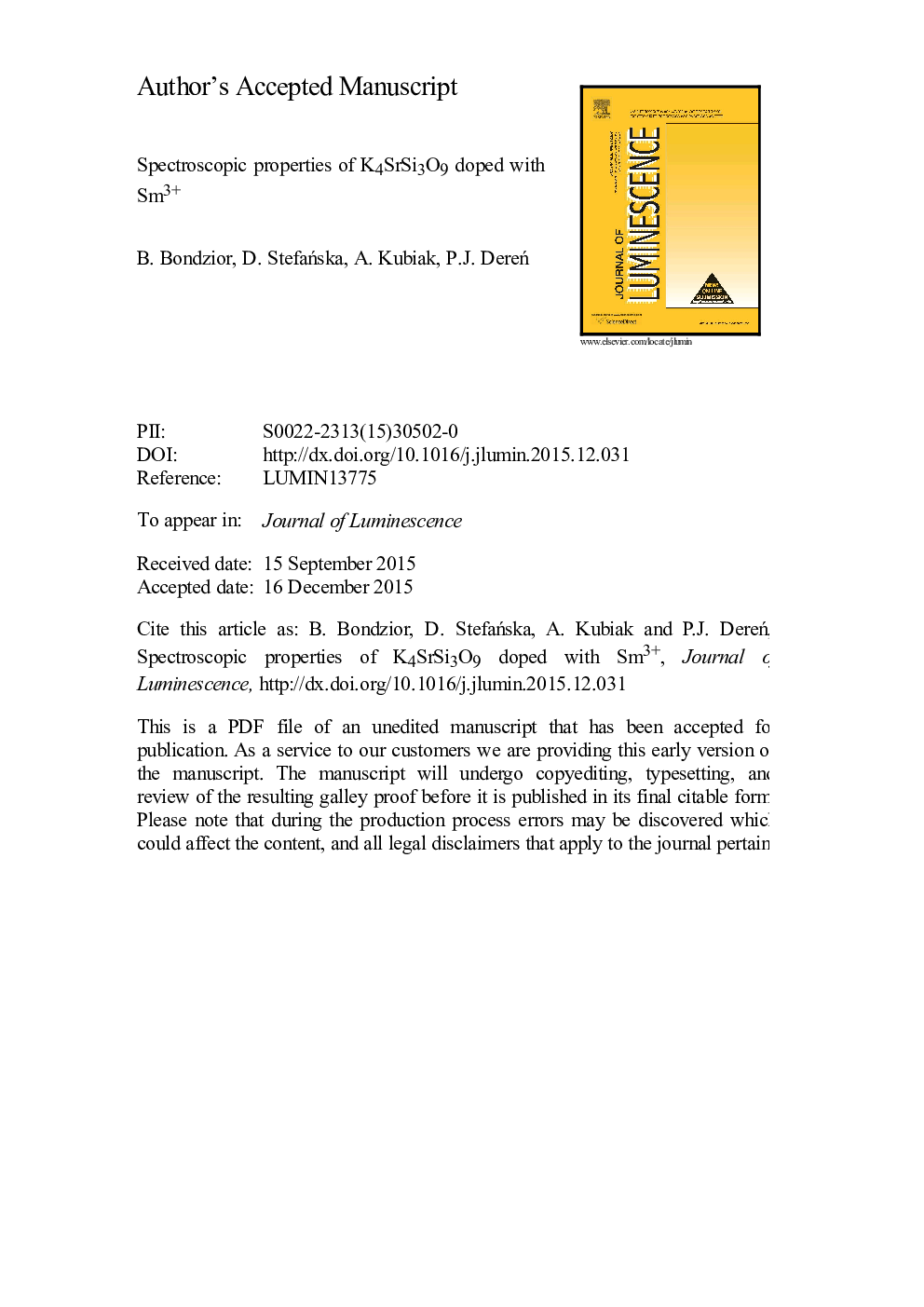| Article ID | Journal | Published Year | Pages | File Type |
|---|---|---|---|---|
| 5398502 | Journal of Luminescence | 2016 | 25 Pages |
Abstract
Sm3+ doped K4SrSi3O9 red phosphor, was synthesized for the first time by the conventional solid state method. The X-ray powder diffraction confirmed that obtained phosphor was single phase. Excitation and emission spectra and decay curves were measured to characterize the luminescent properties of the obtained material. K4SrSi3O9:Sm3+ exhibits red-orange luminescence originating mainly from equally intense 4G5/2â6H7/2 (with its maximum at 598.5Â nm) and 4G5/2â6H9/2 (at 651Â nm) transitions. The luminescence is quenched in the samples doped above 2% of Sm3+ due to non-radiative energy transfer between Sm ions at different sites. The interaction between Sm3+ ions is dipole-quadrupole type and the critical radius for energy transfer was calculated from Inokuti-Hirayama model to be 15.0Â Ã
and 14.2Â Ã
for 300Â K and 77Â K respectively.
Related Topics
Physical Sciences and Engineering
Chemistry
Physical and Theoretical Chemistry
Authors
B. Bondzior, D. StefaÅska, A. Kubiak, P.J. DereÅ,
